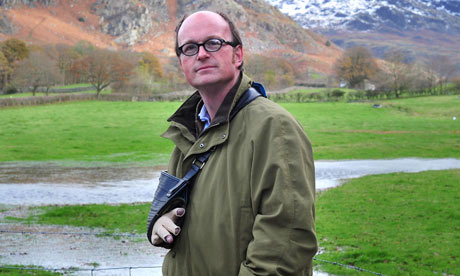
On 2 June last year, in a country lane in Cumbria, a taxi driver pulled up next to local hotelier Harry Berger, raised a loaded shotgun, and emptied both barrels.
The driver's name was Derrick Bird, and Berger was among 25 people he shot that day. Twelve died. One of the survivors – miraculously – was Berger. "The shotgun barrels were only about six inches away from my body," Berger says. "The first shot hit my hand and shredded my little two fingers. The second shot entered through my tricep – about halfway between my elbow and my shoulder – and removed my whole bicep, along with the artery, and nerves."
If it sounds like a war wound, perhaps it's no surprise that, over the following days and months, Berger's maimed arm was treated as such. In the popular imagination, plastic surgery is most often thought of as being facelifts and nose jobs, but the techniques used to repair Berger's arm are reconstructive procedures developed not on the faces of Pete Burns or Donatella Versace, but in the conflict zones of Afghanistan, Belfast, Vietnam and the Falklands.
Surgeons in Carlisle, working within hours of the attack on Berger, took a vein from his right wrist, and used it to replace the destroyed brachial artery – which runs from the armpit to the elbow. "That was the lesson from Vietnam," says Professor Simon Kay, (a past president of the British Association of Plastic, Reconstructive and Aesthetic Surgeons) who later took charge of Berger's recovery. Three days later, Berger was taken to the Spire Leeds hospital, where Kay removed a section or "flap" of muscle that runs between Berger's armpit and hip, and used it to rebuild the missing bicep and tricep muscles. This was, says Kay, "the lesson from Belfast and Afghanistan".
Finally, two months later, Berger went back to Leeds to have the lost nerves replaced – a technique learned during the second world war. "Simon opened up the back of both my left and right legs – from the back of my knee, all the way down to my ankle – and he removed nerve strands from each," says Berger. "He then opened up the flap that he had built in June [in Berger's arm], and grafted in the new nerves."
Before Vietnam, anybody with an arterial injury as serious as Berger's would probably have lost their limb, says Kay. "If you cut off the blood supply to a limb, which is what happens when you rupture the artery, you have only a few hours to restore it," he explains. "What you had in Vietnam" – for the very first time – "was very rapid evacuation. It was the first war with helicopters, which meant surgeons got the wounded back in time to rescue the arteries and repair the limb. And the techniques that evolved there went on to be documented, rehearsed, and then introduced in the western world after the war was over."
Before the conflicts in, among other places, Northern Ireland, Berger's muscle reconstruction would also have been markedly different. It would not have been immediately possible to completely remove Berger's donor muscle from its original site. The donor muscle would have remained attached to his flank – with the other end of the flap attached to his injured arm. But techniques that were refined primarily in Belfast allowed surgeons to join up and seal extremely small blood vessels – and in this instance allowed Kay to remove the portion of muscle from Berger's side altogether.
These procedures – indeed, most of modern techniques plastic surgeons use – have their roots in pioneering operations made during the first world war when there were a large number of facial wounds. "Put your head above the trench parapet, and your face is what gets hit," says Kay. "So the repatriated, mutilated soldiers needed new techniques to reconstruct their faces." Enter "the father of plastic surgery", says Kay. While reconstructive concepts had been known since medieval times, it was Harold Gillies who "laid down the ground rules for the reconstruction of ears, lips, noses, mouths, chins and jaws". Even cosmetic surgeries, such as the facelift, or eye-lid repair, can be traced back to the New Zealand-born surgeon.
In 1917, Gillies set up shop at Queen Mary's hospital in Sidcup, Kent. Here he came up with an early version of the flap: "Literally a flap of skin" that he could "swing across on to the wound, leaving it attached on one margin". Gillies was helped by Ivan Magill, who invented the oral anaesthetic tube that allowed Gillies to avoid sedating his patients with a chloroform cloth, which would have prevented him from freely operating on their faces.
Back in Cumbria, Harry Berger has faced other problems. His nerves have still not fully grown back, so he cannot yet use his right arm and has been forced to take more of a backseat at the Woolpack Inn he owns with his wife, Paddington. "There's not a lot you can do one-handed in the hotel industry." It's not for lack of trying, though. "I learned to tie my shoelaces with my left hand seven days after I got shot," Berger tells me. "And I'd learned to write with my left hand, joined up, within three weeks." Berger is not the despondent type. In fact, he views his experience as almost positive. "I was in the wrong place at the wrong time," he says. "Or the right place at the right time, depending on your attitude. I'm alive, not dead."
• This article was amended on 2 March 2011. The original version referred to "Queen's Hospital in Sidcup, Kent". This has now been corrected to "Queen Mary's hospital in Sidcup, Kent".

